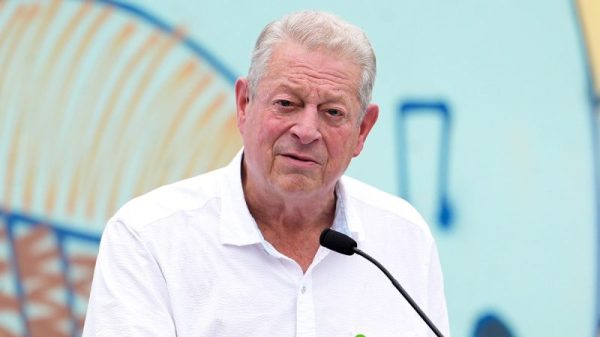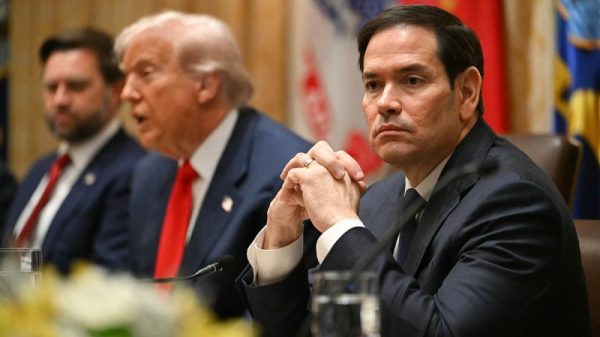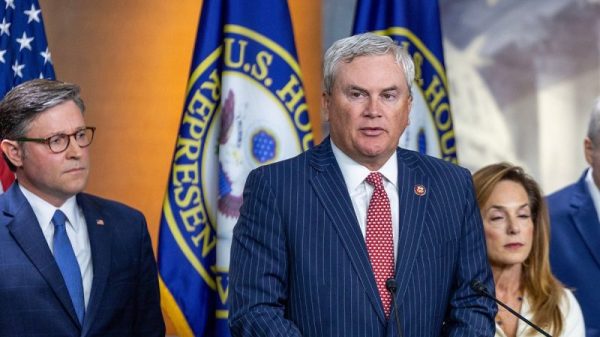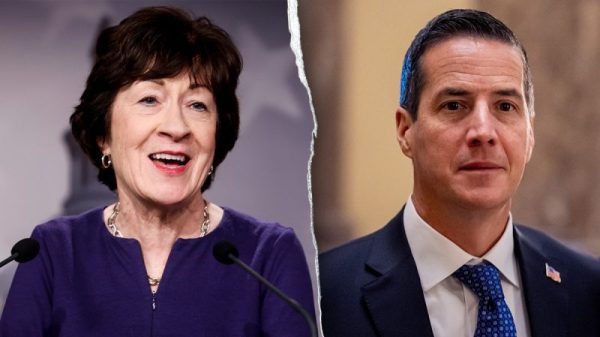When voters in California head to the polls on Tuesday they will find two U.S. Senate races on their primary ballots.
The races are for the same Senate seat held for three decades by Dianne Feinstein (D), who died in September. After her death, Gov. Gavin Newsom (D) appointed Laphonza Butler to fill the seat until a special election could be held.
A few days after Butler was appointed to the seat, she announced she would not run for a full senate term. That helped set off races for a rare open Senate seat in the heavily Democratic-leaning state. Dozens of people jumped at the chance to run.
Under a California law enacted in 2022, if a senator vacates their seat more than 148 days before the next regularly scheduled statewide primary, the state is required to hold a special election on the same day as the regularly scheduled primary election.
The special election will determine who will serve the remainder of Feinstein’s term, which ends in January. The regularly scheduled primary is for the full six-year term that begins with the next Congress.
The leading candidates in the race include Democratic House members Adam Schiff, Katie Porter and Barbara Lee as well as former Major League Baseball player Steve Garvey, who is a Republican. In California primaries, the top two vote-getters advance to November’s general election, regardless of party.
Holding two races for the same seat on the same primary ballot is enough to make even the most seasoned political veterans’ heads spin, let alone voters who may not realize there’s an additional Senate race before heading to the polls.
“I get confused of what’s going on, and I’m the head of the California Voter Foundation,” Kim Alexander, founder and president of the nonpartisan, nonprofit organization whose goal is to improve voting in the state. “If I’m having questions when I’m voting, it’s probably much harder for the typical voter out there.”
The Senate races are “taking up a lot of ballot real estate,” Alexander said. She added that having to explain how to vote takes away time and resources that candidates and activists could dedicate to addressing any number of issues facing California right now.
She added: “It’s a waste of people’s time and attention,” since the special election is for a Senate term that only lasts a few months.
Because of the double-billing on the ballot, Senate candidates had to lobby voters for their support and also educate them on how to vote.
Schiff posted a minute-long video on his campaign website where he walks voters through the ballot. “This is super important so I’m going to try to be really brief,” Schiff says in the video, standing in front of a giant sample ballot.
Porter, famous for using whiteboards to make visual points during congressional hearings, used them again to educate voters on her website and on social media. And Lee has made “Vote Twice” part of her bio on X.
“Quite a bit of our campaign has been about educating voters,” Lee told The Washington Post on Monday, referring to her record and the voting process. “It’s up to candidates to drill down a bit,” she said. Lee also said she’s had success explaining the voting process to voters. “We clarify that for voters,” she said.
Schiff poured a large amount of money into the race, including ads that focused on Garvey, seemingly to help elevate the Republican candidate to the general election race rather than one of his Democratic challengers.
When voters in California head to the polls on Tuesday they will find two U.S. Senate races on their primary ballots.
The races are for the same Senate seat held for three decades by Dianne Feinstein (D), who died in September. After her death, Gov. Gavin Newsom (D) appointed Laphonza Butler to fill the seat until a special election could be held.
A few days after Butler was appointed to the seat, she announced she would not run for a full senate term. That helped set off races for a rare open Senate seat in the heavily Democratic-leaning state. Dozens of people jumped at the chance to run.
Under a California law enacted in 2022, if a senator vacates their seat more than 148 days before the next regularly scheduled statewide primary, the state is required to hold a special election on the same day as the regularly scheduled primary election.
The special election will determine who will serve the remainder of Feinstein’s term, which ends in January. The regularly scheduled primary is for the full six-year term that begins with the next Congress.
The leading candidates in the race include Democratic House members Adam Schiff, Katie Porter and Barbara Lee as well as former Major League Baseball player Steve Garvey, who is a Republican. In California primaries, the top two vote-getters advance to November’s general election, regardless of party.
Holding two races for the same seat on the same primary ballot is enough to make even the most seasoned political veterans’ heads spin, let alone voters who may not realize there’s an additional Senate race before heading to the polls.
“I get confused of what’s going on, and I’m the head of the California Voter Foundation,” Kim Alexander, founder and president of the nonpartisan, nonprofit organization whose goal is to improve voting in the state. “If I’m having questions when I’m voting, it’s probably much harder for the typical voter out there.”
The Senate races are “taking up a lot of ballot real estate,” Alexander said. She added that having to explain how to vote takes away time and resources that candidates and activists could dedicate to addressing any number of issues facing California right now.
She added: “It’s a waste of people’s time and attention,” since the special election is for a Senate term that only lasts a few months.
Because of the double-billing on the ballot, Senate candidates had to lobby voters for their support and also educate them on how to vote.
Schiff posted a minute-long video on his campaign website where he walks voters through the ballot. “This is super important so I’m going to try to be really brief,” Schiff says in the video, standing in front of a giant sample ballot.
Porter, famous for using whiteboards to make visual points during congressional hearings, used them again to educate voters on her website and on social media. And Lee has made “Vote Twice” part of her bio on X.
“Quite a bit of our campaign has been about educating voters,” Lee told The Washington Post on Monday, referring to her record and the voting process. “It’s up to candidates to drill down a bit,” she said. Lee also said she’s had success explaining the voting process to voters. “We clarify that for voters,” she said.
Schiff poured a large amount of money into the race, including ads that focused on Garvey, seemingly to help elevate the Republican candidate to the general election race rather than one of his Democratic challengers.





















